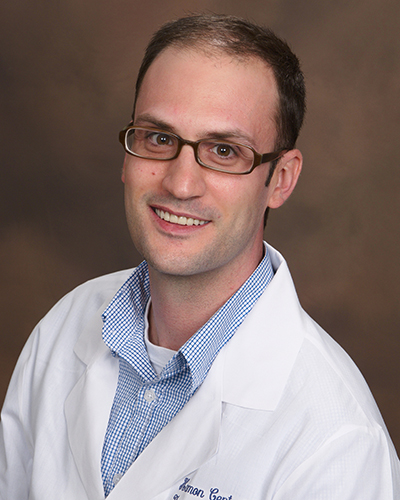Six Questions for Michael Dellinger, Ph.D., on the Dellinger Lab
Were you always interested in research, or did you originally have another career path in mind?
My original plan was to become a medical doctor. However, I became fascinated with research when I was an undergraduate at the University of Arizona. When I was working in a plant genetics lab, I identified a gene that governed how plants respond to environmental stress. That discovery fueled my passion for research and ultimately changed my career path. After finishing my undergraduate studies, I knew that I wanted to pursue a Ph.D. and work toward having a research lab of my own.
The Dellinger lab studies lymphatic anomalies. What got you interested in this area?
Lymphatic anomalies are diseases of the lymphatic system. When I was a graduate student, I rotated in a lab that studied lymphatic anomalies. My rotation project was on a rare disease called lymphedema-distichiasis. Patients with this disease have swollen limbs and an extra row of eyelashes. This disease sparked my interest in other inherited diseases of the lymphatic system and in cancer-associated lymphedema. Because very little is known about these diseases, I felt that my work could have a significant impact on the treatment of patients.
What is the main focus of the Dellinger lab right now?
My laboratory is primarily focused on Gorham-Stout disease (GSD). GSD is a lymphatic anomaly that is characterized by the development of lymphatics in bone and by bone loss. My lab has created the first animal model of GSD, and we are using this model to develop a better understanding of the pathophysiology of GSD. My laboratory is also studying the mechanisms by which lymphatic vessels promote the spread of cancer and lymphedema.
What is your ultimate goal for the Dellinger lab?
New lymphatic vessels are generated through a process called lymphangiogenesis. Lymphangiogenesis is required for embryonic development, and it serves an important function in the pathogenesis of inflammatory diseases and cancer. Our ultimate goal is to understand the mechanisms that control lymphangiogenesis. By studying lymphatic anomalies, we hope to gain key insights into the mechanisms that control lymphangiogenesis. We believe this knowledge could be used to inhibit lymphangiogenesis in lymphatic anomaly patients and in other human diseases.
What are your research goals for this year?
Our goals for 2018 are to develop and characterize the next generation of animal models of GSD. My lab has partnered with geneticists that have identified genetic mutations that cause GSD. We have recently generated mice that have the same genetic mutations as GSD patients. We plan to use these mice to develop a better understanding of the pathogenesis of GSD and to identify new treatments for this disease.
How do you spend your spare time?
I spend my free time fishing and hiking around the DFW Metroplex. I frequently go to the Trinity River to catch and release catfish, and I go to the Great Trinity Forest to hike and view birds and other wildlife. I am also a guitar enthusiast. I own five guitars and have a classical guitar in my office. I try to play guitar a few minutes every day, and I have found that the guitar is a great tool to overcome writer’s block when I am writing grants and papers. Lastly, I like to spend time with my family. My wife and I have a one-year-old son, and we spend a lot of time crawling on the floor with him and reading to him.

